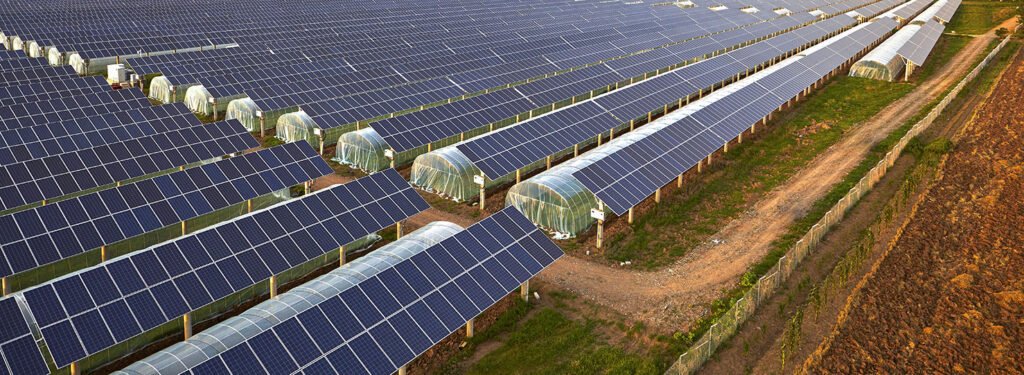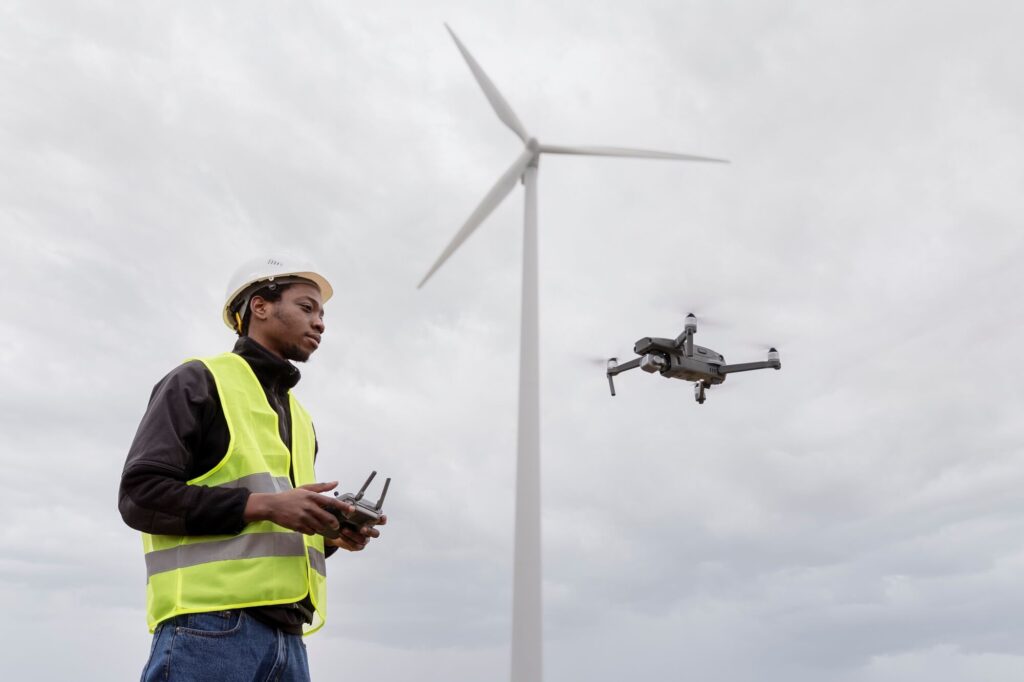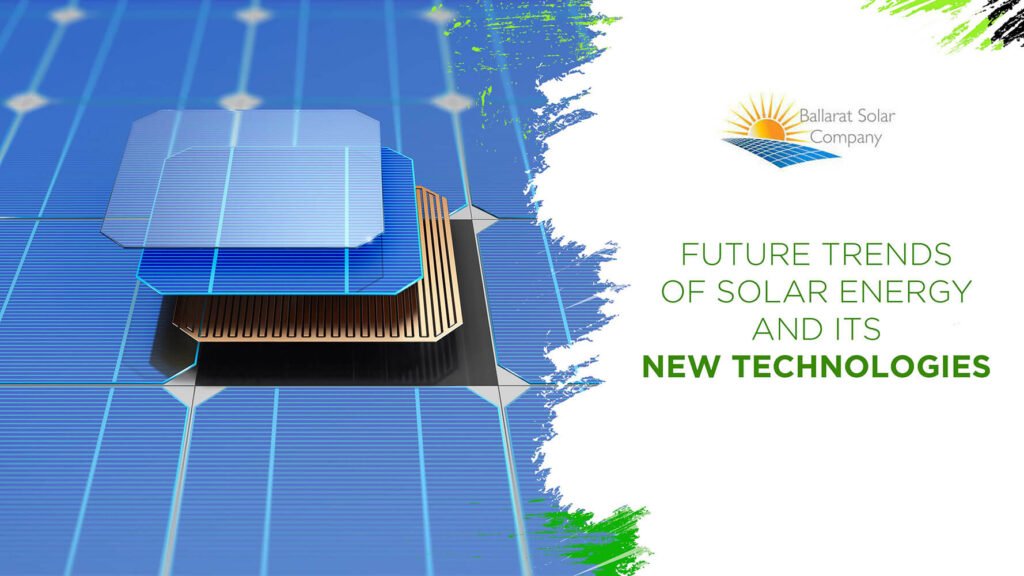Table of Contents
With the world moving towards green energy sources, solar energy has become more popular among many households and businesses. As a result, the incorporation of solar energy and its technologies have evolved over the years.
Many countries, including Australia, have taken steps to enhance solar technology to get maximum benefits from solar energy. Due to the improvements in technology, there are new and improved solar materials on the market.
Further, new solar energy applications, operations, and maintenance methods exist today. This article will briefly outline the possible solar energy trends and upcoming technologies which could improve the solar industry.
Material
The growth and expansion in the solar industry mainly depends on minimising its cost and improving the efficiency of absorbing more solar power. Therefore, solar panel manufacturers should make solar cells (photovoltaic cells) from a cheaper material but with higher efficiency.
Most solar photovoltaic (PV) panels are made from crystalline silicon (c-Si) these days. They are also known as first-generation PV technology. These PV panels are more affordable and efficient, since silicon is mainly used here.
Despite the above key advantages, these panels need further improvements in:
- Lowering the cost for better profit margins.
- Mitigating environmental waste.
- Reducing metallic impurities and grain boundaries.
- Yielding thinner panels through improved materials.
Therefore, PV manufacturers introduced new and efficient materials to overcome these issues. However, most of these technologies are still in the development stage.
1. Silicon based advance technologies
These are the improved PV technologies made from silicon.
Passivated emitter and rear cell (PERC)
These cells use advanced silicon cell structures. The key improvement here is that the cells are also placed on the back of the panel. The PERCs will have bifacial solar cells that are capable of generating electricity from the reflected sunlight.
Therefore they can convert both direct and reflected sunlight simultaneously into electricity from the cells at the top and rear. This improves the ability of the PV panel to generate more electricity.
Tandem cells
The tandem cells are a group of individual cells stacked over each other. In this cell structure, the top layer of cells will absorb a range of solar energy and pass down the rest to be absorbed by the bottom layer.
The tandem cell approach was designed to be one of the most efficient ways of converting solar energy into electricity. However, the material used in this approach and the fabrication process itself can be quite expensive. Therefore, there is still room for improvement in the tandem cells approach.
2. Non-silicon-based technologies
Thin film
The thin film technology is also referred to as the second-generation PV technology. These films are made from semiconducting materials to make them thinner. They are also cheap due to the least use of material and have a trend to improve their efficiency in converting more electricity.
The thin solar film market can be segmented into copper indium gallium selenide (CIGS), cadmium telluride (CdTe), and amorphous thin-film silicon.
The PV cells made from CIGS and CdTe represent the largest commercial market for thin film production. They have a lower cost as opposed to silicon-based technologies. The thin film market is expected to grow immensely in the coming years.
Application
The modern application trends of solar panels are beyond the typical locations such as fields and rooftops. These significant developments are as follows:
1. Floating PV

What is a floating PV? It is where the solar panels are placed on top of water bodies. This is highly cost-effective since the cost of the water surface is lower than the cost of land.
Further, you can expand them over a large surface of a water body. The floating PV system is ideal for countries with low land areas and more water bodies like lakes, dams, etc.
With this technology, installers should take measures to implement an anchoring system to support the panels to withstand wind and hard waves.
2. Building-integrated PV panels
Have you heard about solar shingles? This is a solar energy solution where the PV panels are designed to look like a conventional roof and produce electricity simultaneously.

Solar shingles are a great example of building-integrated PV panels. These panels provide both direct (electricity generation) and indirect (thermal protection) benefits. Further, this is a cost-efficient solar solution since you can save the roofing material cost.
3. Solar trees

Solar trees will look like real trees. They would have leaves made out of PV panels connected through metal branches to convert solar energy into electricity. Solar trees can be used to complement rooftop solar panels.
They are more ergonomic than solar panels since they are erected vertically and take less space to produce the same level of electricity.
4. Solar carports
There is an ongoing trend of mounting solar panels on top of car parking lots and driveways at home. This will both provide shade to the vehicles and produce electricity simultaneously. You can also use them as charging points for electric vehicles..
5. Agro Photovoltaic
The agro photovoltaic is the concept of merging PV with agriculture on the same land. Here the crops are grown behind the land-mounted solar panels. The concept was proposed a long time ago, but received attention recently.
There are various benefits of growing crops behind the shade of solar panels. While the panels produce more electricity, the crops will yield high under the shade and would also use less water. Many crops, such as tomatoes, grow in the shade.
There will also be less transpiration due to shade, so the crops won’t be dry. Further, humidity from the crops can cool down the solar panels too.

Operations and maintenance
Solar technology has evolved over the years. Not only in application, but various developments were also made in the maintenance of the panels to increase their lifetime.
Solar power coolant
The manufacturers have made various attempts to increase the efficiency of the panels. However, there was a common unanswered question. That is the heating of the panels. Excessive heating can reduce the life expectancy of the panels.
However, modern technology has evolved over the years to answer this question. There are several mechanisms used to cool the panels. There is a transparent silica coating to reduce the heat up. Further, infrared reflation and radiative transfers are used to improve the cooling ability of the panels.
This can increase the life expectancy of the panels while increasing their efficiency.
Drones for intelligent solar PV monitoring
The constant growth in the solar industry has paved the way for large-scale solar farms. Surveyors must do various inspections to identify the most suitable locations. Earlier, they did this manually..

However, in modern days, drones are used for this process. They are equipped with better tools to identify the best locations in the area.
Summary
Solar energy is the holy grail of renewable energy sources in Australia. The world is evolving with technology and new innovations.
Likewise, solar technology has evolved much when compared to the earlier days. With these significant improvements, solar energy will become the next sensation. Therefore you should also incorporate solar energy into your household or business.
If you are looking for a trustworthy solar installer in Ballarat, don’t hesitate to contact Ballarat Solar Company. We have been in the industry for a long time, and we can provide the best solar solutions for your property.


